Glossary
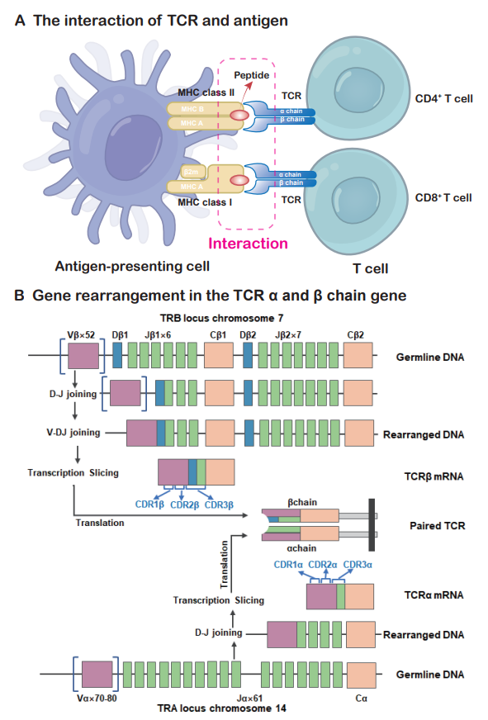
| Term | Definition |
|---|---|
| TCR | T cell receptor. |
| Antigen | Peptide-major histocompatibility complex multimer which can be recognized by TCR. |
| MHC | The major histocompatibility complex. |
| HLA | The human leukocyte antigen. |
| CDR3 α/β | The third complementarity determining region of the T-cell receptor(TCR) α and β chains. |
| TRAV/TRAJ | V/J gene of TCR α chain. |
| TRBV/TRBJ | V/J gene of TCR β chain. |
| Peptide_species | Species of peptide. |
| HLA_mut/Pep_mut/TCR_mut | The mutant site of HLA/peptide/TCR. |
| Binding | Descript the binding capacity between TCR and pMHC. TRUE (Binding); FALSE(Non-Binding). |
| Affinity | The binding affinity between TCR and pMHC. |
| Structure | The structure of TCR-pMHC complexes from PDB. |
| Interactive pairs | The pairs of TCR and antigen that can interact with each other. |
| Non-interactive pairs | The pairs of TCR and antigen that can not interact with each other. |
Usage of TRAIT
The usage of search page
In the Search page, users can search the database by using TCR, antigen, interaction information and record metadata field filters through the reset button.

The simplified information would be displayed once searching.
1.The detailed information would be displayed by double-clicking.
2.It would be linked to PDB if the structure is available there.
3.It would be linked to data source by clicking the PMID number.
4.The search result could be downloaded.
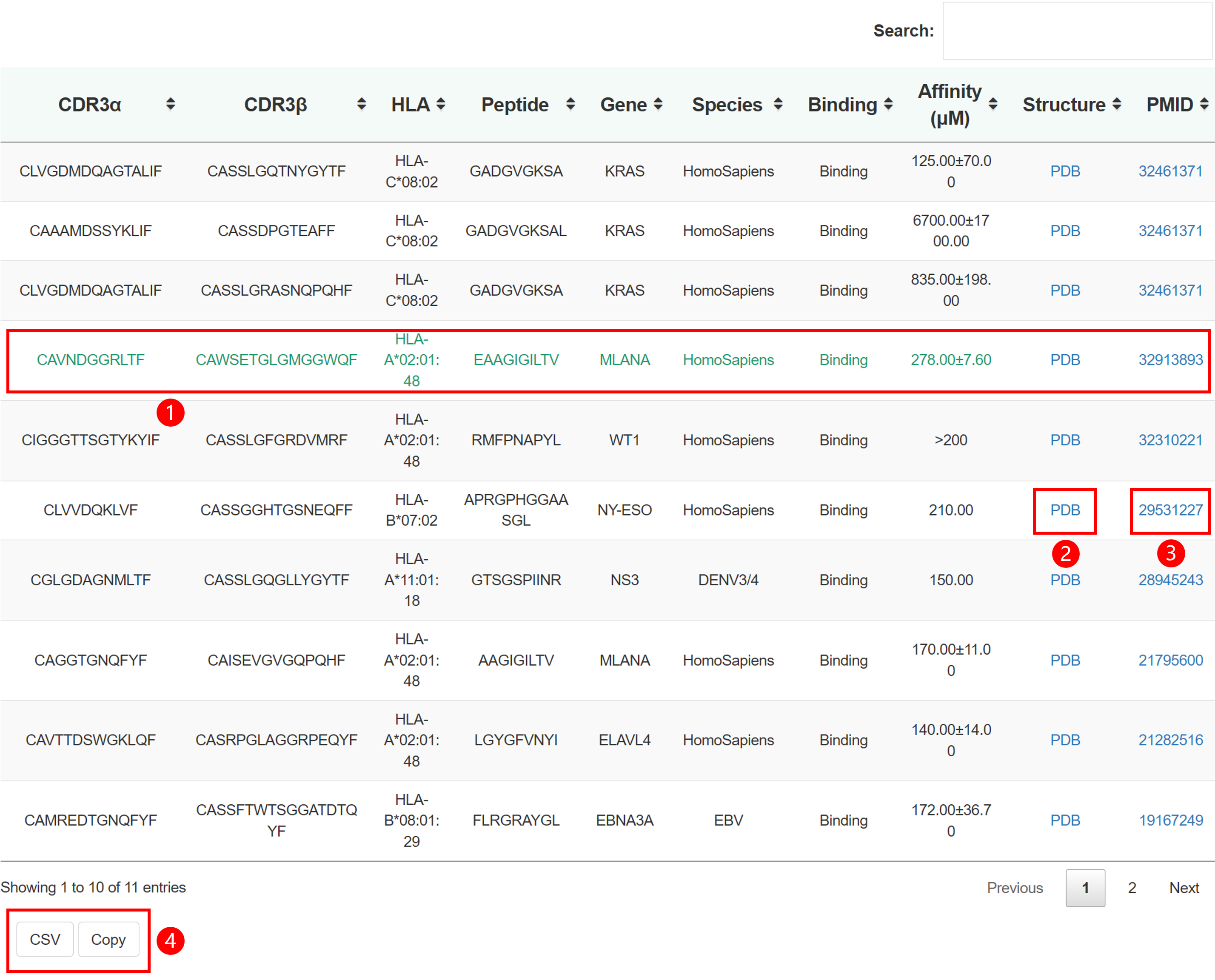
The detailed information of the TCR-pMHC pair.
The structure could be browsed by clicking different button.
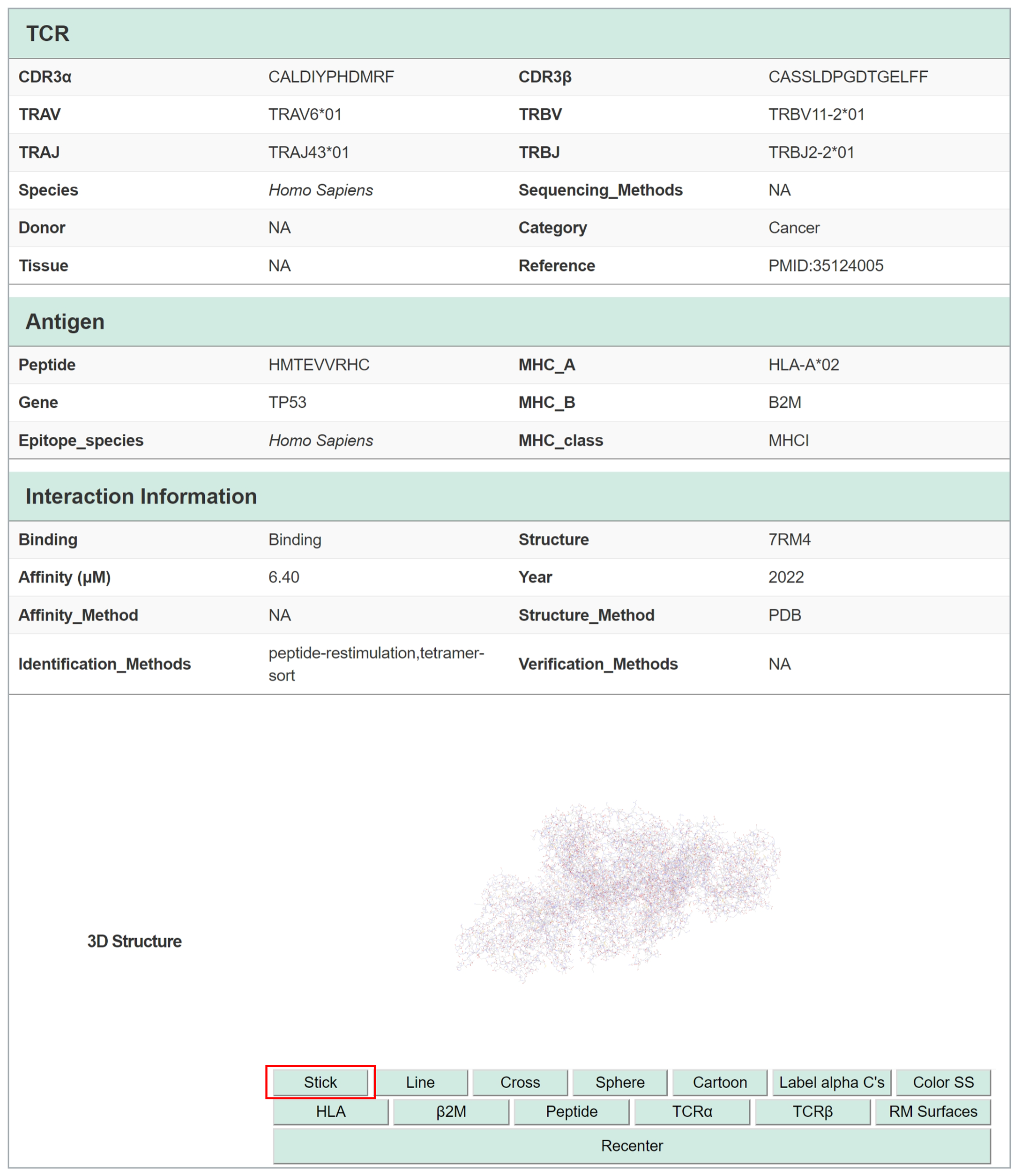
The usage of omics page
The detailed information of the data collected from 10X genomics.
1.The detailed information of positive TCR-pMHC pairs and would be displayed below.
2.The data would be downloaded oncle clicking.
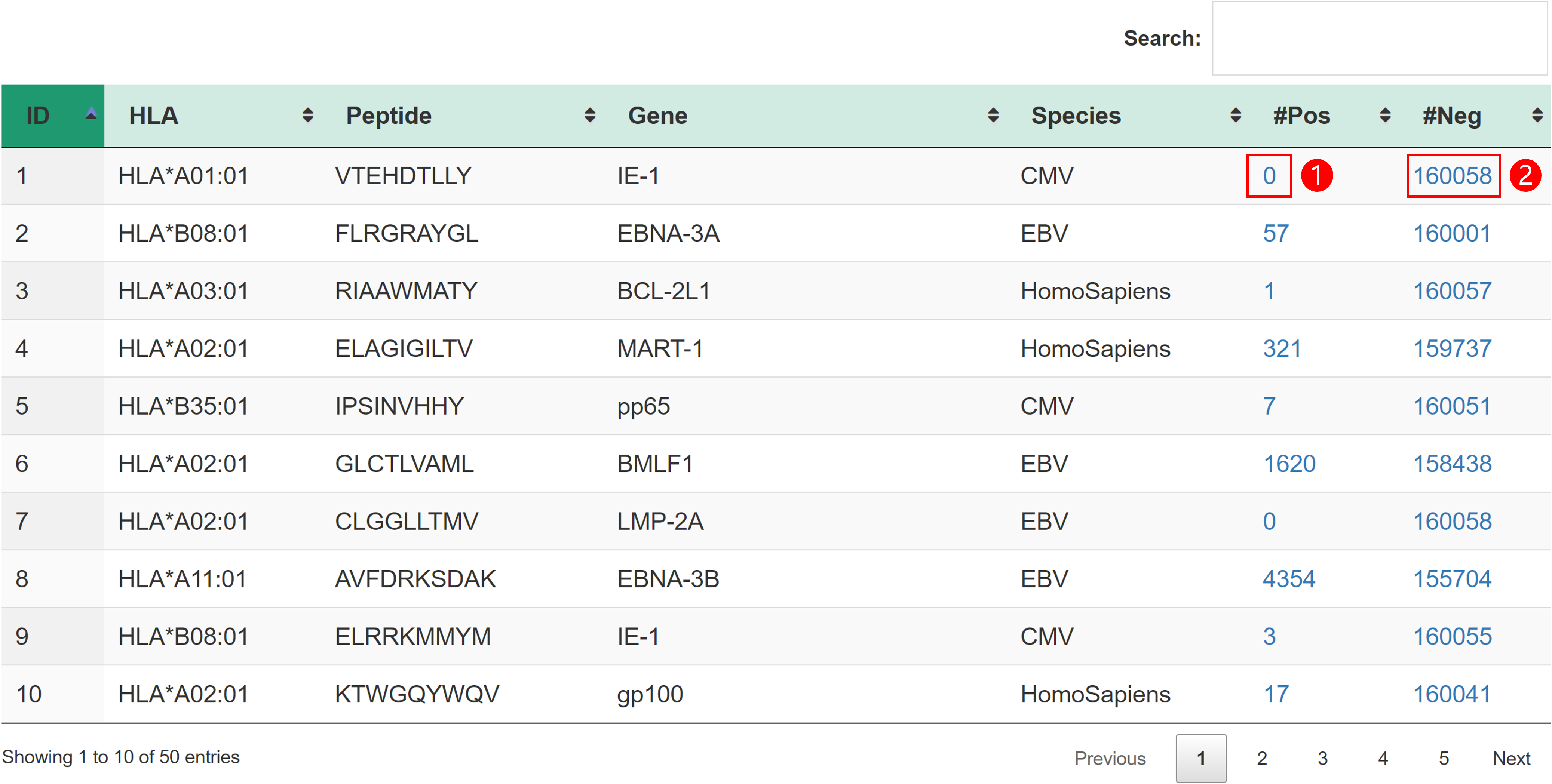
Visualization of Omics data.
1.The left part shows the average V-J gene utilization of paired TCR sequences
2.The right part shows the positive sequence logo of CDR3 α(top) and β(bottom) sequences

Information on experimentally validated TCR pairs interacting with specific epitopes
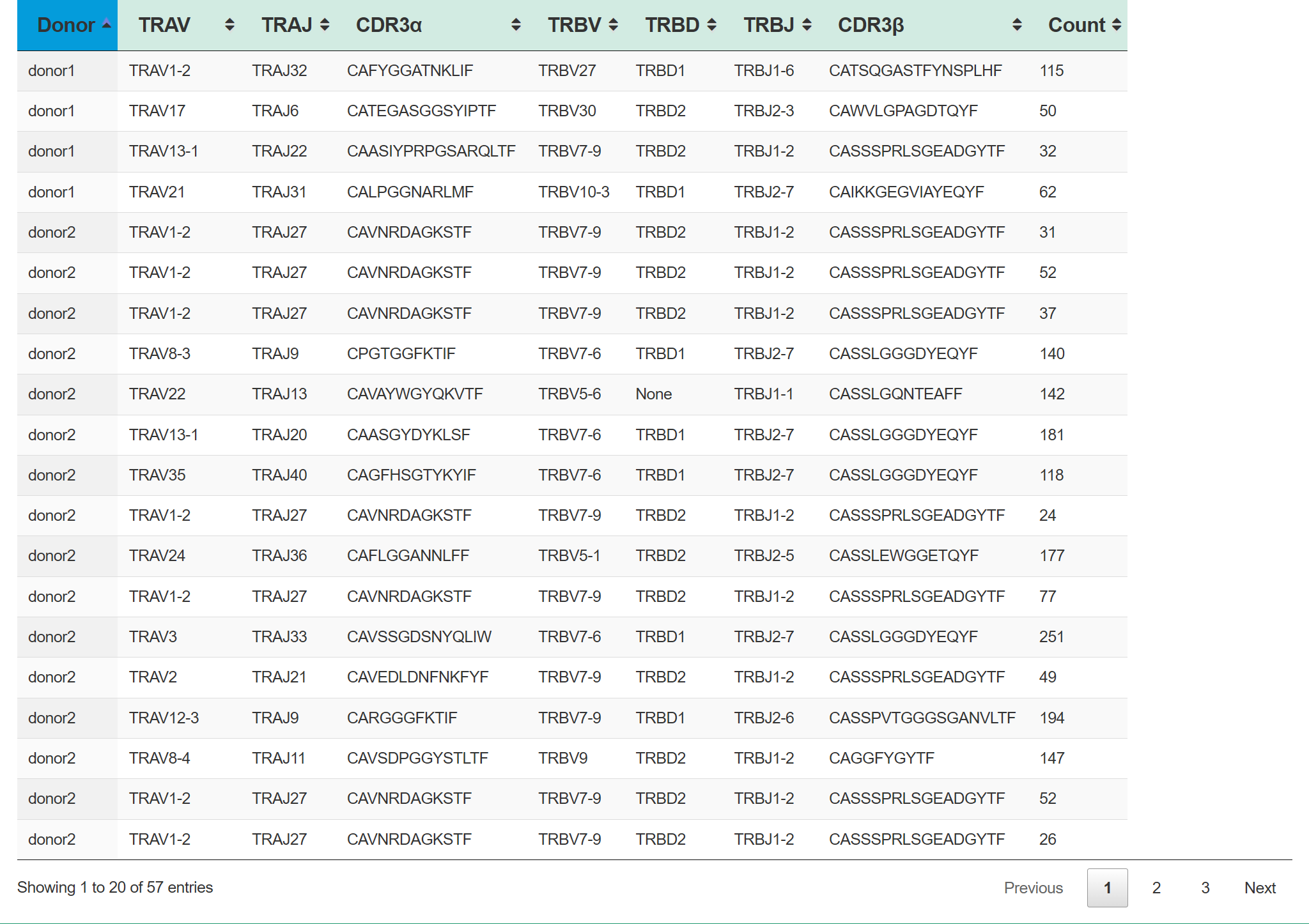
The usage of mutation page
The TCR-pMHC data with mutation and mutated affinity.
1.The detailed information of the mutation containing the TCR once clicking.
2.The detailed information of the mutation containing the peptide once clicking.
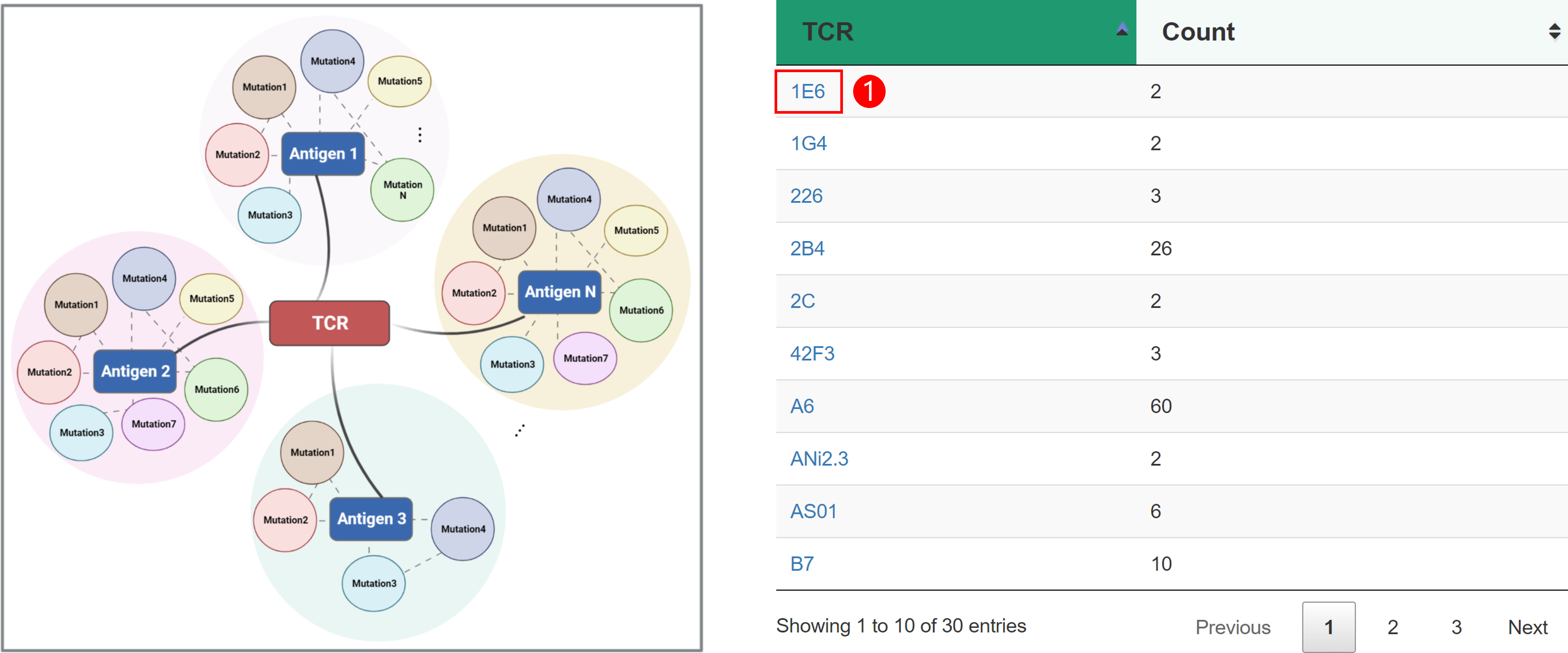
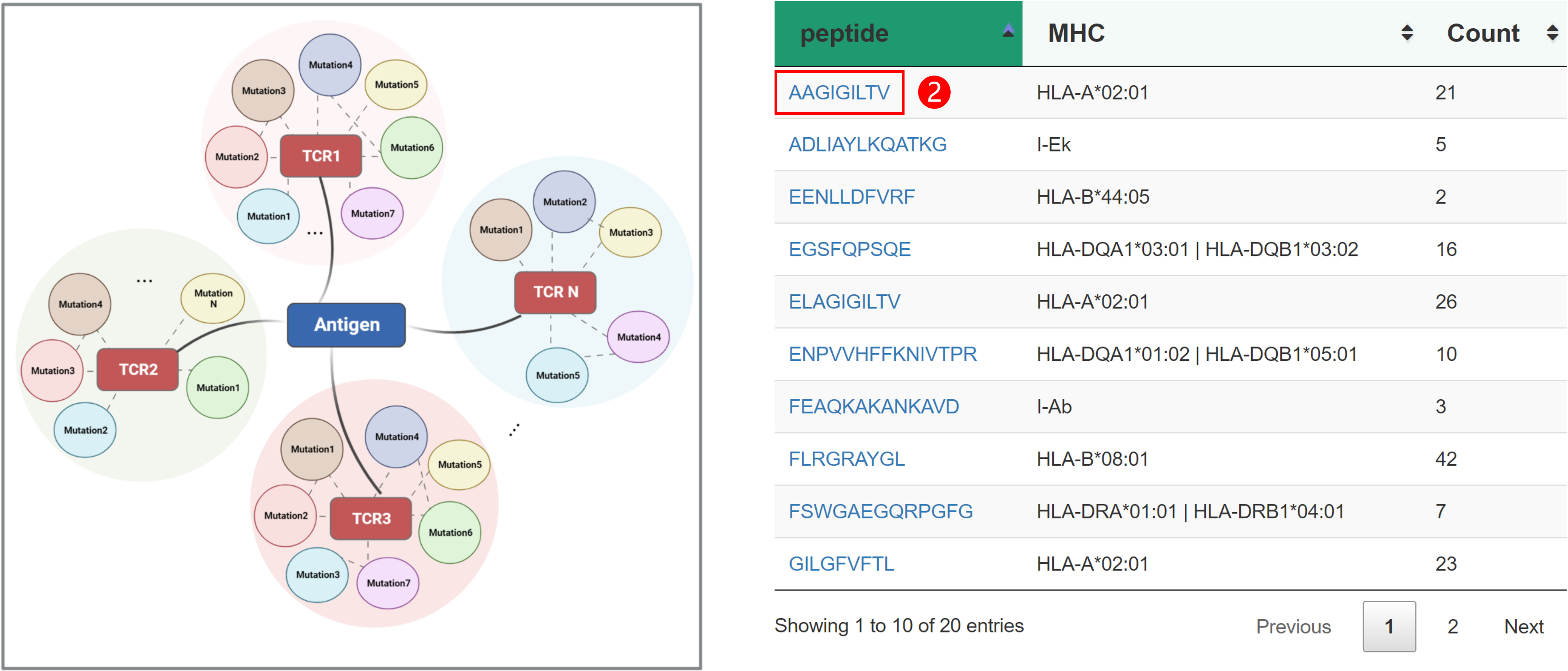
Affinity changes for peptide mutations targeting specific TCR.
1.Different types of mutations (including single-point mutations, two-point mutations, and multi-point mutations) are indicated in the diagram using different colored circles.
2.The detailed amino acid residues are interactively viewed by placing the mouse on any of the circles.
3.The lines between nodes in the "Common mutation diagram" show the common mutation between the two mutation records.
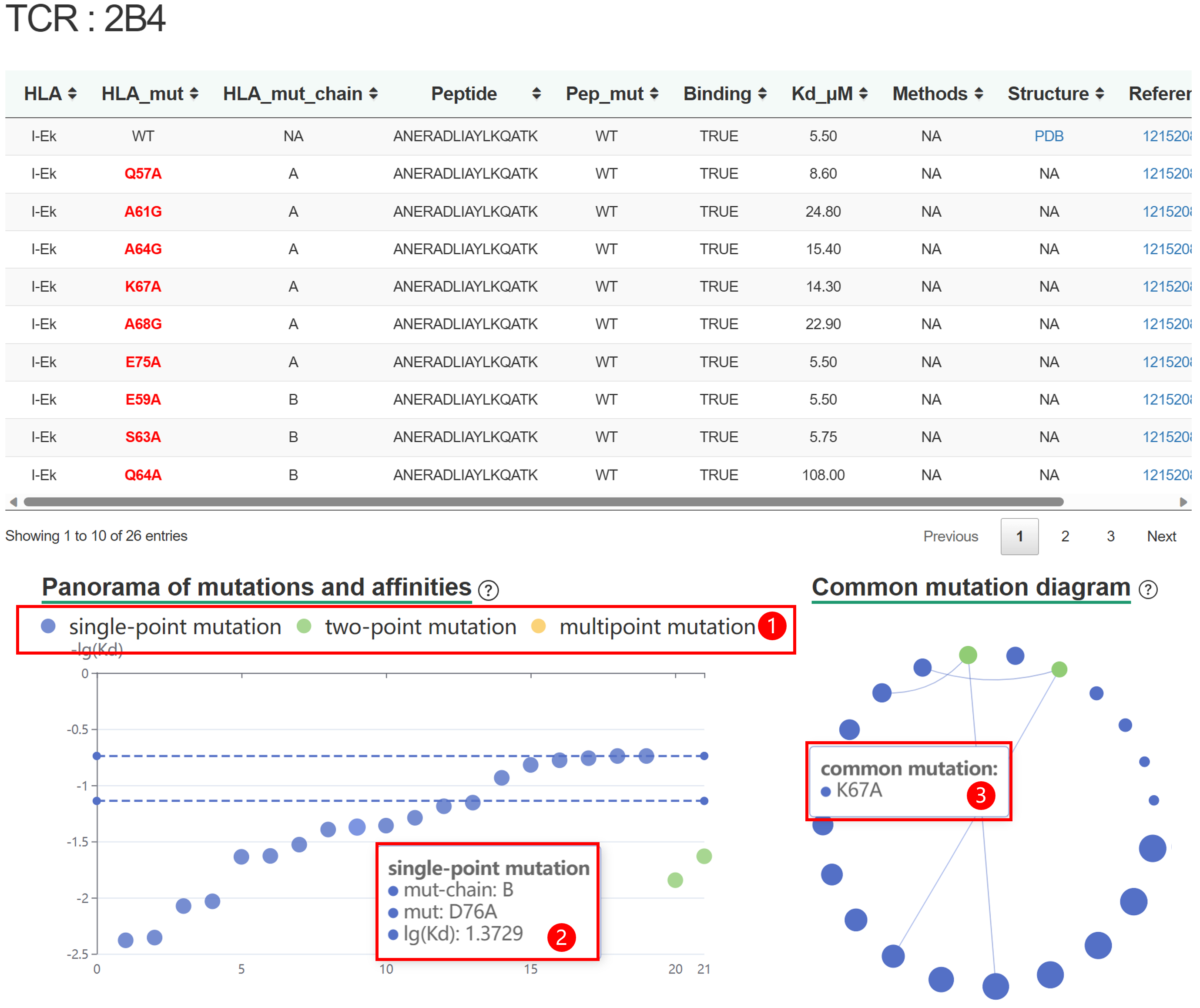
Affinity changes for TCR mutations targeting specific peptide.
1.Different types of mutations (including single-point mutations, two-point mutations, and multi-point mutations) are indicated in the diagram using different colored circles.
2.The detailed amino acid residues are interactively viewed by placing the mouse on any of the circles.
3.Mutations for different TCRs will be displayed in different tables.
4.The lines between nodes in the "Common mutation diagram" show the common mutation between the two mutation records.


The usage of therapeutics page
The explicit description on the pharma-information of each studied TCRs in clinical status.
1. In the search box, users can filter therapeutics cards on TCR name, Clinical trails, Study phase, Cancer type, CDR modification(yes or no), Target antigens, and HLA alleles.
2.The detailed information of the clinical trails once clicking.

The detailed information of the clinical trails.

About Us
Citation
Contact
Address: College of Pharmaceutical Sciences, Zhejiang University, Hangzhou, China.
